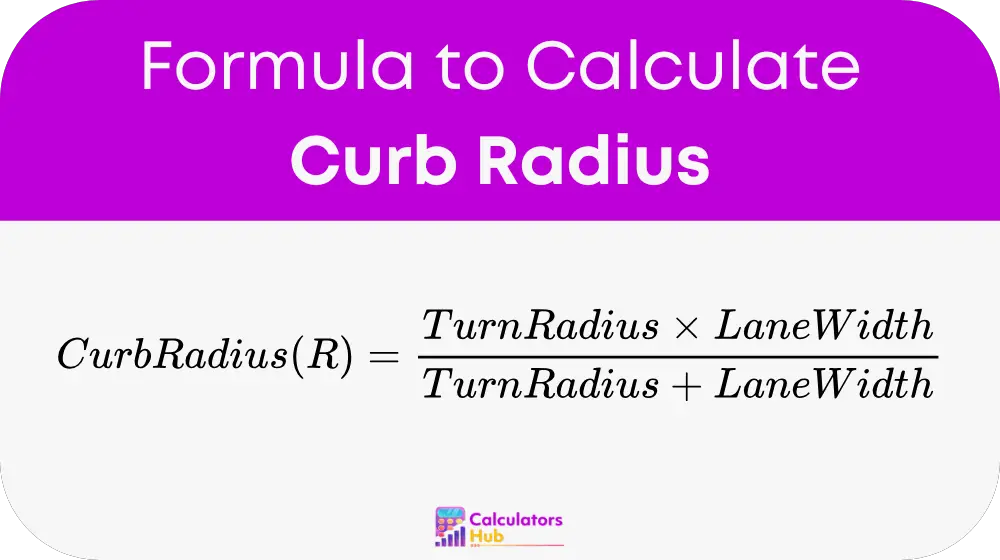The Curb Radius Calculator helps determine the appropriate curb radius for intersections and road designs. It is primarily used in urban planning, civil engineering, and traffic management to ensure that vehicles can turn smoothly and safely without encroaching on other lanes or pedestrian areas.
Curb radius affects vehicle maneuverability, pedestrian safety, and road efficiency. A well-calculated curb radius helps reduce the risk of accidents, improves accessibility, and ensures compliance with transportation regulations. The calculator simplifies the process by providing quick and accurate curb radius measurements based on the dimensions of the street and the turning radius of vehicles.
Formula of Curb Radius Calculator
The curb radius is determined using the following formula:

Where:
- Turn Radius is the turning radius of the vehicle (typically measured in feet or meters). It represents how tightly a vehicle can make a turn without losing control.
- Lane Width is the width of the lane the vehicle is turning into (typically measured in feet or meters). This ensures that the vehicle can make the turn without crossing into another lane.
This formula provides an accurate estimate of the required curb radius based on vehicle size and road dimensions.
General Curb Radius Estimation Table
For quick reference, the table below provides estimated curb radius values based on common turn radius and lane width measurements.
| Turn Radius (ft) | Lane Width (ft) | Curb Radius (ft) |
|---|---|---|
| 20 | 10 | 6.67 |
| 25 | 12 | 7.89 |
| 30 | 14 | 9.00 |
| 35 | 16 | 10.06 |
| 40 | 18 | 11.08 |
| 45 | 20 | 12.07 |
This table allows urban planners and engineers to quickly estimate curb radius values without performing manual calculations.
Example of Curb Radius Calculator
Suppose an engineer is designing an intersection where the turning radius of vehicles is 30 feet, and the lane width is 12 feet.
Using the formula:
Curb Radius (R) = (30 × 12) / (30 + 12)
Curb Radius (R) = 360 / 42 = 8.57 feet
This means that the curb should have a radius of approximately 8.57 feet to accommodate vehicles turning smoothly and safely.
Most Common FAQs
Curb radius is essential for ensuring that vehicles can turn smoothly without encroaching on adjacent lanes or pedestrian areas. A properly designed curb radius improves safety and traffic flow.
A larger curb radius allows vehicles to turn at higher speeds, which may increase risks for pedestrians. A smaller curb radius encourages slower turns, improving pedestrian safety by reducing vehicle speeds at intersections.
Several factors affect curb radius calculations, including vehicle type, lane width, traffic flow, pedestrian considerations, and urban planning regulations. Engineers consider these elements to ensure efficient and safe road design.